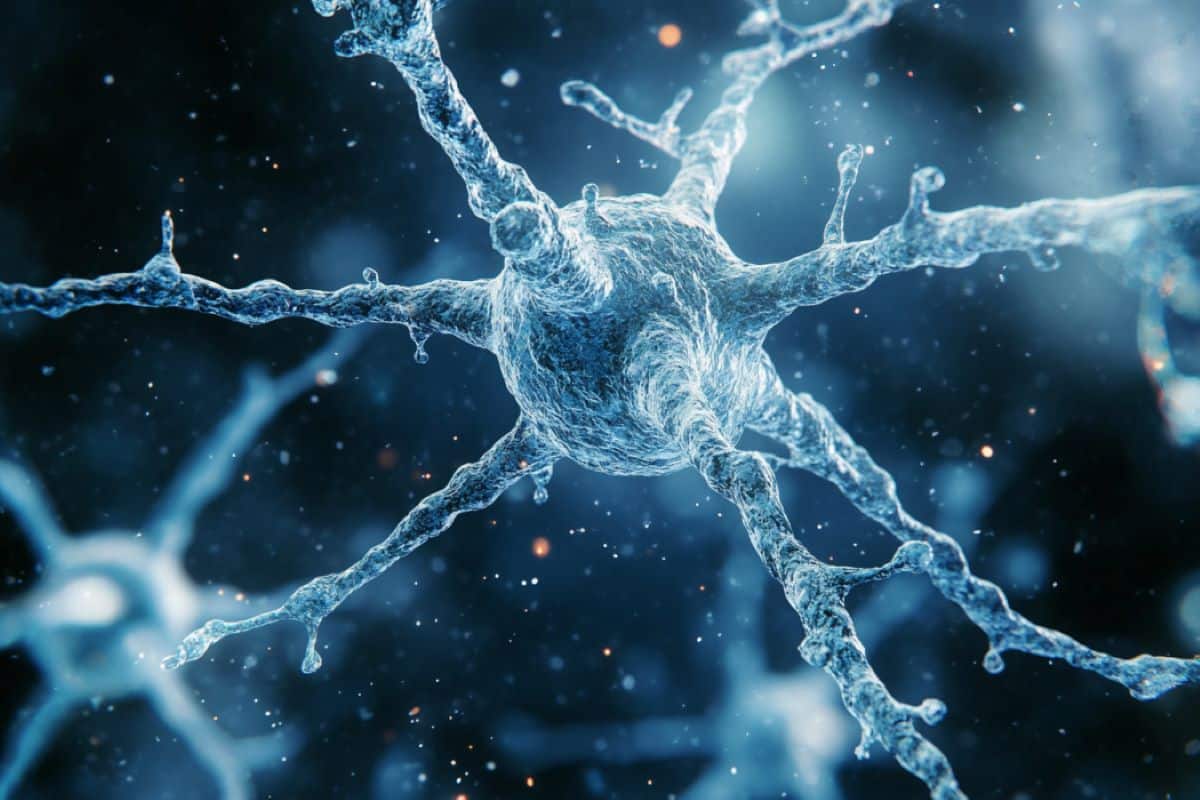Summary: A new study has revealed critical metabolic impairments in Parkinson’s disease (PD), focusing on purine metabolism and ATP recycling. Researchers found that patients with PD have significantly lower levels of uric acid and other purine metabolites in their blood and cerebrospinal fluid, affecting energy production in the brain.
This discovery challenges previous assumptions about purine metabolism and suggests that targeting ATP recycling could lead to new treatments for PD. The study highlights the need for therapies aimed at improving energy metabolism, rather than simply increasing uric acid levels.
Key Facts:
- Parkinson’s patients have lower levels of uric acid, linked to ATP disruption.
- Reduced levels of purine metabolites indicate impaired energy recycling.
- Targeting ATP production could offer new therapeutic approaches for PD.
Source: Fujita Health University
Parkinson’s disease (PD), the second most common neurodegenerative disorder globally, has long baffled scientists with its progressive nature and debilitating effects on motor function.
A recent study from the School of Medicine at Fujita Health University has brought new insights into the metabolic disruptions experienced by patients with PD. By analyzing the blood and cerebrospinal fluid (CSF) of the patients, researchers have discovered critical impairments in purine metabolism and the recycling of adenosine triphosphate (ATP)—the molecule responsible for energy production in cells.

For years, scientists have noted the decreased levels of uric acid in patients with PD. Uric acid, a compound known for its antioxidant properties, was initially thought to play a direct role in the disease by reducing oxidative stress in the brain.
However, this study, published in NPJ Parkinson’s Disease on 09 September 2024 reveals that the situation is more complex.
“Our findings suggest that decreased uric acid levels in patients with PD are influenced by factors beyond purine metabolism, including external factors such as sex, weight, and age,” said Dr. Watanabe, the lead author of the study.
“This means the relationship between uric acid and PD is more nuanced than we previously thought, and it’s about more than just oxidative stress.”
By assessing the levels of purine metabolites, including inosine, hypoxanthine, xanthine, and uric acid, using a technique called targeted metabolomics, they found that patients with PD have significantly lower levels of uric acid in both serum and CSF compared to healthy controls. Additionally, the levels of hypoxanthine, another purine metabolite, were reduced.
According to the study, the reductions in serum and CSF uric acid were linked to body weight and sex, but not to the upstream metabolite xanthine, which challenges prior assumptions about purine metabolism.
As Dr. Watanabe explains, “Our findings indicate that serum and CSF uric acid levels are not directly related to upstream xanthine concentrations, suggesting influences beyond traditional purine metabolism pathways.”
This discovery is crucial, as it points to an impairment in the ATP recycling system. ATP is essential for cellular energy use, and its breakdown and recycling are vital for maintaining healthy cell function. In PD, this system seems to be malfunctioning, leading to an energy deficit that could further exacerbate the disease’s symptoms.
Another important aspect of the study involved inosine, a precursor to uric acid. The team observed a significant reduction in CSF inosine in patients with PD, but no significant drop in serum inosine.
As Dr. Watanabe explains, “Our study found that the reduction in CSF inosine may reflect a decrease in nucleotide production within the central nervous system, and this could have major implications for energy production in the brain.”
The study notably found that, compared with healthy controls, patients with PD had substantially lower serum and CSF hypoxanthine levels. Over 90% of hypoxanthine is recycled as inosine monophosphate (IMP) in the salvage pathway, which plays a crucial role in maintaining energy production.
The discovery that energy metabolism is disrupted in PD opens the door to new treatment strategies. Current therapies largely focus on managing symptoms, but this research suggests that targeting the body’s energy recycling system could slow the disease’s progression.
This study shows that treatments aimed at elevating serum uric acid levels might have limited efficacy in improving Parkinsonism. Instead, focusing on the purine recycling system, particularly enhancing ATP production, could hold more promise.
As the research progresses, the team hopes to explore exercise and nutritional interventions as possible ways to improve energy metabolism and ATP recycling.
In conclusion, this incredible research brings us one step closer to understanding the complex metabolic changes involved in PD. By focusing on energy metabolism and the purine recycling system, scientists could develop new treatments that not only slow the progression of the disease but also improve the quality of life for patients.
About this Parkinson’s disease research news
Author: Hisatsugu Koshimizu
Source: Fujita Health University
Contact: Hisatsugu Koshimizu – Fujita Health University
Image: The image is credited to Neuroscience News
Original Research: Open access.
“Uric acid and alterations of purine recycling disorders in Parkinson’s disease: a cross-sectional study” by Hirohisa Watanabe et al. npj Parkinson’s Disease
Abstract
Uric acid and alterations of purine recycling disorders in Parkinson’s disease: a cross-sectional study
The relationship between reduced serum uric acid (UA) levels and Parkinson’s disease (PD), particularly purine metabolic pathways, is not fully understood.
Our study compared serum and cerebrospinal fluid (CSF) levels of inosine, hypoxanthine, xanthine, and UA in PD patients and healthy controls. We analyzed 132 samples (serum, 45 PD, and 29 age- and sex-matched healthy controls; CSF, 39 PD, and 19 age- and sex-matched healthy controls) using liquid chromatography-tandem mass spectrometry.
Results showed significantly lower serum and CSF UA levels in PD patients than in controls (p < 0.0001; effect size r = 0.5007 in serum, p = 0.0046; r = 0.3720 in CSF).
Decreased serum hypoxanthine levels were observed (p = 0.0002; r = 0.4338) in PD patients compared to controls with decreased CSF inosine and hypoxanthine levels (p < 0.0001, r = 0.5396: p = 0.0276, r = 0.2893).
A general linear model analysis indicated that the reduced UA levels were mainly due to external factors such as sex and weight in serum and age and weight in CSF unrelated to the purine metabolic pathway.
Our findings highlight that decreased UA levels in PD are influenced by factors beyond purine metabolism, including external factors such as sex, weight, and age, emphasizing the need for further research into the underlying mechanisms and potential therapeutic approaches.






